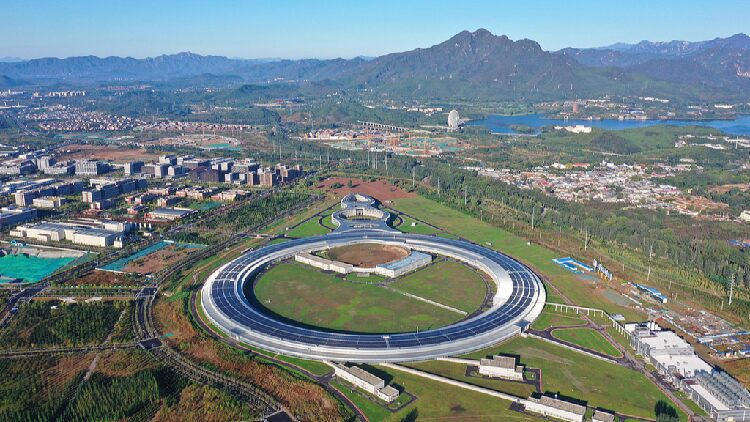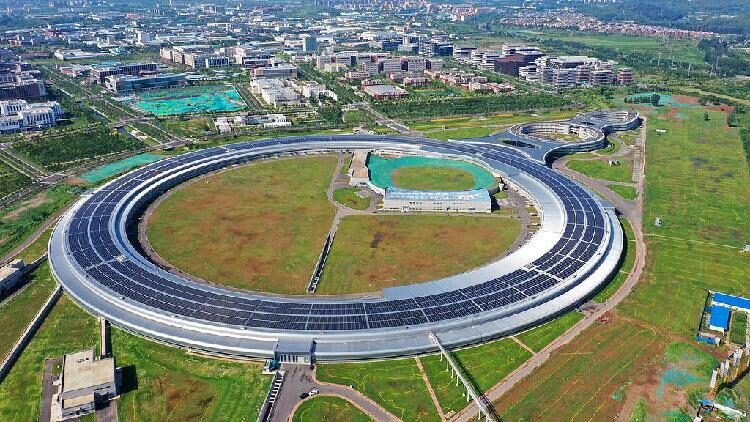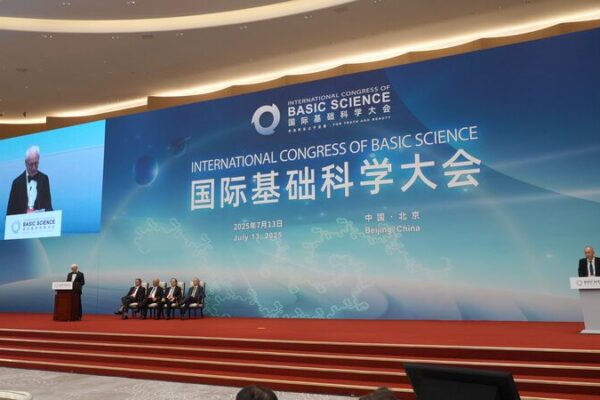China’s revolutionary High Energy Photon Source (HEPS) is entering its final construction phase, promising to dramatically advance scientific research across multiple fields.
Announced by the Institute of High Energy Physics (IHEP) under the Chinese Academy of Sciences, HEPS has officially launched its joint commissioning phase—a major step towards its planned operation by the end of 2025.
So, what exactly is HEPS? Imagine a machine that can produce light one trillion times brighter than the Sun. That’s HEPS—a cutting-edge facility known as a synchrotron radiation light source. It uses accelerated electrons to generate extremely bright X-rays, which scientists can use to look deep into the structures of materials at the atomic level.
Construction began back in 2019 in Beijing’s Huairou District. The facility includes powerful accelerators, complex beamlines, experimental stations, and support infrastructure. Once completed, it will be open to researchers worldwide, impacting fields like aerospace, energy, environmental science, life sciences, and pharmaceuticals.
Earlier this year, HEPS reached a significant milestone. It achieved an electron beam emittance—a measure of the beam’s quality—of 93 picometer radians in its storage ring and a beam current over 40 mA. In simpler terms, this means HEPS can produce exceptionally bright and focused beams of light, essential for high-precision experiments.
According to Pan Weimin, director of the HEPS project, the team introduced innovative designs to make the facility more efficient and cost-effective. “We developed a method to use our booster both as an accelerator and an accumulator, which significantly cuts down on infrastructure costs,” he explained.
In addition, HEPS is making strides in sustainability. Jiao Yi, deputy head of the accelerator division, mentioned that the facility’s injection and extraction system allows for electron beam recycling, making the entire process more environmentally friendly.
One of the most exciting parts of HEPS is the Hard X-ray Imaging (HXI) beamline. Think of it as a super-powered X-ray machine that goes beyond conventional capabilities. “The HXI beamline combines advanced devices and a long-distance setup to achieve higher coherence, deeper penetration, a wider field of view, and higher resolution,” said Dong Yuhui, HEPS executive deputy director.
This means scientists can study the tiny details inside materials and even explore complex systems like whole-brain neural networks with unprecedented clarity. “The high-energy X-ray has already been transmitted into the end station of the HXI beamline,” Dong added. “This will revolutionize studies in aerospace materials and neuroscience, offering greater efficiency and precision.”
As HEPS moves closer to becoming fully operational, it stands as a testament to China’s growing role in global scientific innovation. For young people around the world, especially in the Global South, HEPS represents new opportunities for discovery and collaboration in cutting-edge research.
Reference(s):
Construction of China's High Energy Photon Source enters final stage
cgtn.com








